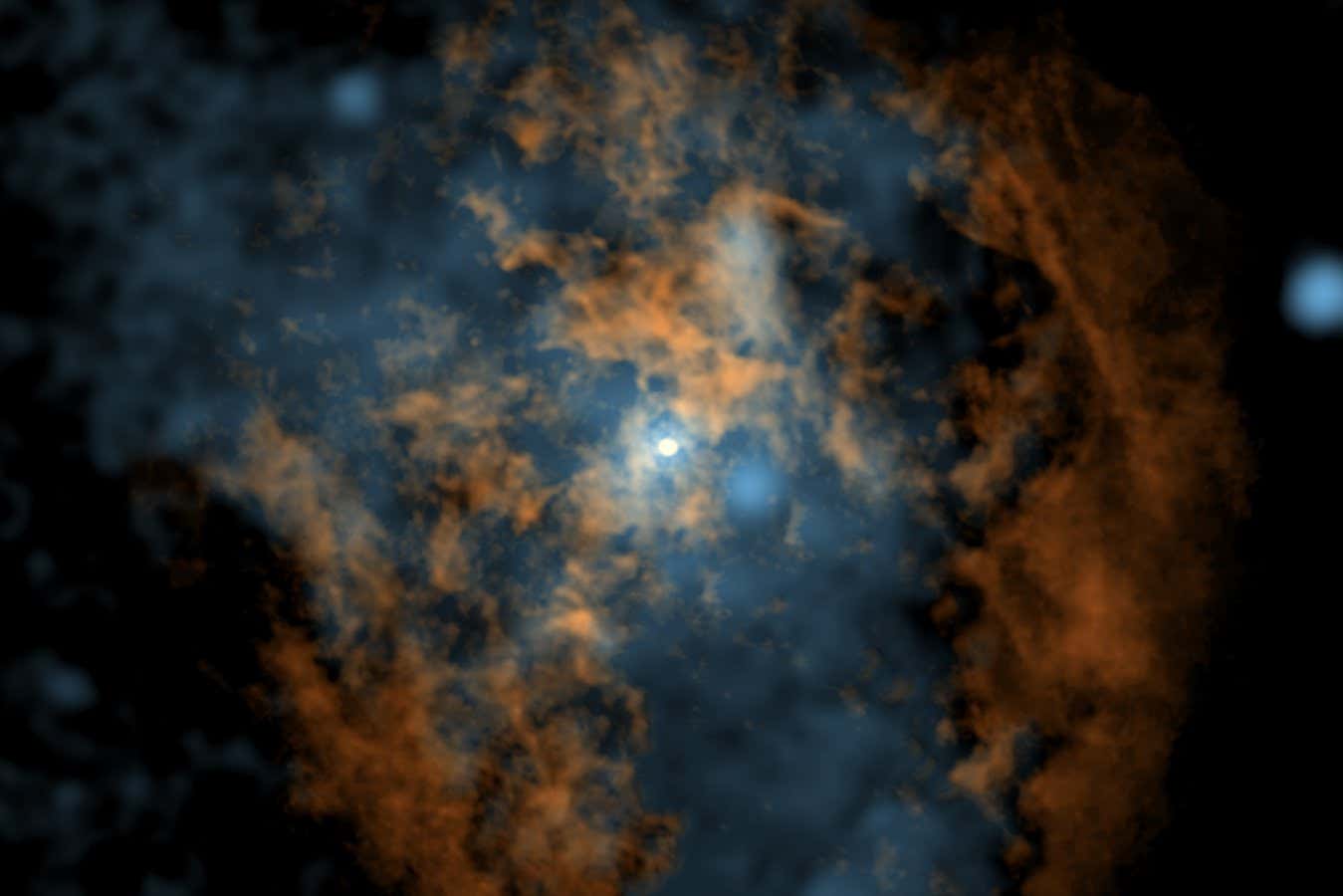
Molecular gas and X-ray emission around Sagittarius A*, the Milky Way’s black hole
Mark D. Gorski et al. (CC BY 4.0)
We have found hot wind blasting out from our galaxy’s supermassive black hole for the first time, which could help us understand its mysterious inactivity.
Compared to many other supermassive black holes that lie at the centres of galaxies, our black hole, called Sagittarius A* or Sgr A*, is relatively quiet. It doesn’t shoot out vast, powerful jets like black holes in many other galaxies do, which are so bright we can spot them even in the earliest moments of the universe. But all supermassive black holes, including Sgr A*, are thought to produce winds – wafts of hot gas blasted out from near the black hole’s event horizon, where gas is swirling and violently heating up.
These winds, however, have never been conclusively detected in Sgr A*, despite being predicted since the 1970s. This is partly because it is so difficult to observe the region around our galaxy’s black hole, a tightly packed melange of stars, dust and gas called the circumnuclear disc (CND).
Now, Mark Gorski and Elena Murchikova at Northwestern University in Illinois have measured the innermost region of the CND in far greater detail than before using the Atacama Large Millimeter/submillimeter Array (ALMA) in Chile. They found large regions of cold gas they didn’t expect to be there, as well as a clear cone of hot gas cutting through it, which appears to be the missing wind.
Finding so much cold gas around the black hole at this distance was unexpected, says Gorski. The conventional wisdom was there was no point looking for it, as it probably didn’t exist, he says. “When I presented this image to [my colleague], I said, ‘Well, we have to focus on this now, because it has been such a problem for over 50 years’.”
Gorski and Murchikova took five years of observations of the innermost part of the CND from ALMA and produced a map of cold gas within a few light years of Sgr A* that was 100 times sharper than previous observations. They achieved this by simulating how the bright light from Sgr A* flickered, and then subtracting it from the dim light of the cold gas.
From this, they could see a clear cone in which there was barely any cold gas. When they laid X-ray data – emissions produced by hot gas – overtop they found the two regions matched almost perfectly. They calculated the total energy needed to blow hot gas through this cone is equivalent to about 25,000 suns, meaning it can’t have been produced from nearby stars, and there are no obvious supernovas that might have generated the hot gas either. This suggests the wind is coming from Sgr A* itself. “The energy necessary requires a black hole to be there. It requires that there is a wind from the black hole,” says Gorski.
Astronomers have previously spotted vast bubbles of gas above and below the galactic plane, called Fermi bubbles, that suggest our black hole once had jets. However, it is unclear whether these jets might form again. Measuring this wind could help explain why Sgr A* is relatively inactive and help us better understand the phases of black hole evolution.
Finding Sgr A*’s missing wind is exciting if the results are confirmed, says Ziri Younsi at University College London, because it could give us crucial information about the black hole itself, such as in what direction it is spinning. Astronomers assumed Sgr A* would spin perpendicular to the plane of the Milky Way, meaning we should be seeing it edge-on. But when the first images of the black hole from the Event Horizon Telescope were released in 2022, it appeared to be face-on instead, although the data was inconclusive.
“Sagittarius A*’s mass is incredibly well-constrained by observations, but its inclination angle with respect to us is just so poorly constrained it can basically be anything,” says Younsi. “Understanding maybe where these streams of matter are coming from, if this result is absolutely robust, is really exciting because it gives us some indication as to the direction in which all the matter flowing into the black hole is coming.” That could also help us understand more about how our galaxy evolved.
Topics:
Source link : https://www.newscientist.com/article/2497671-we-finally-found-the-hot-wind-coming-out-of-our-black-hole/?utm_campaign=RSS%7CNSNS&utm_source=NSNS&utm_medium=RSS&utm_content=home
Author :
Publish date : 2025-09-24 19:01:00
Copyright for syndicated content belongs to the linked Source.